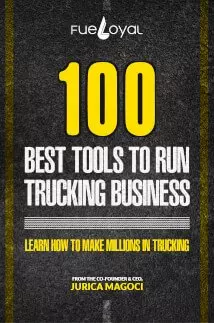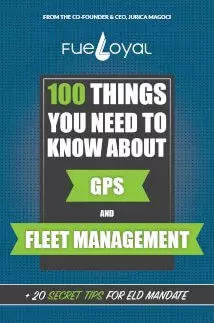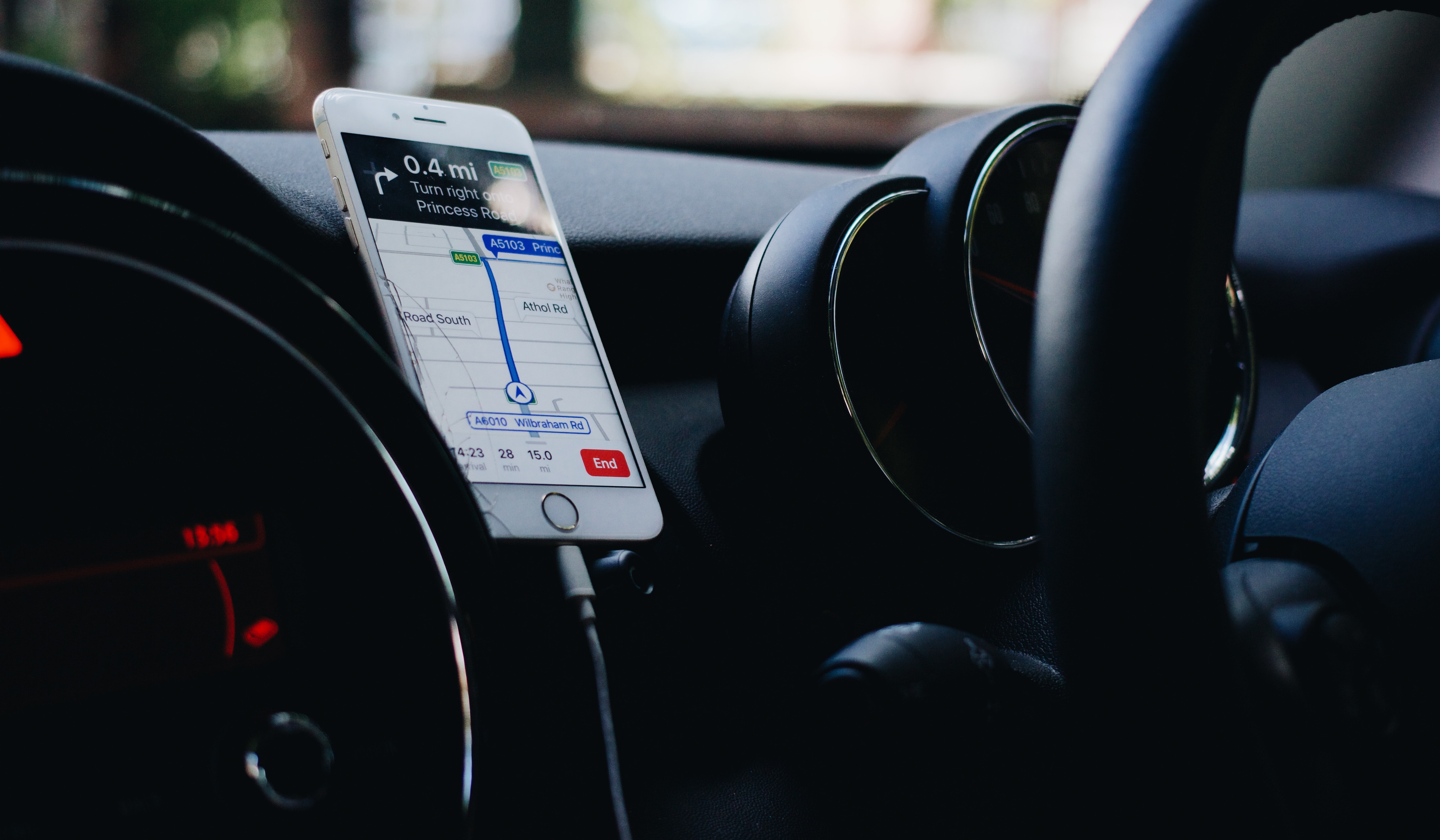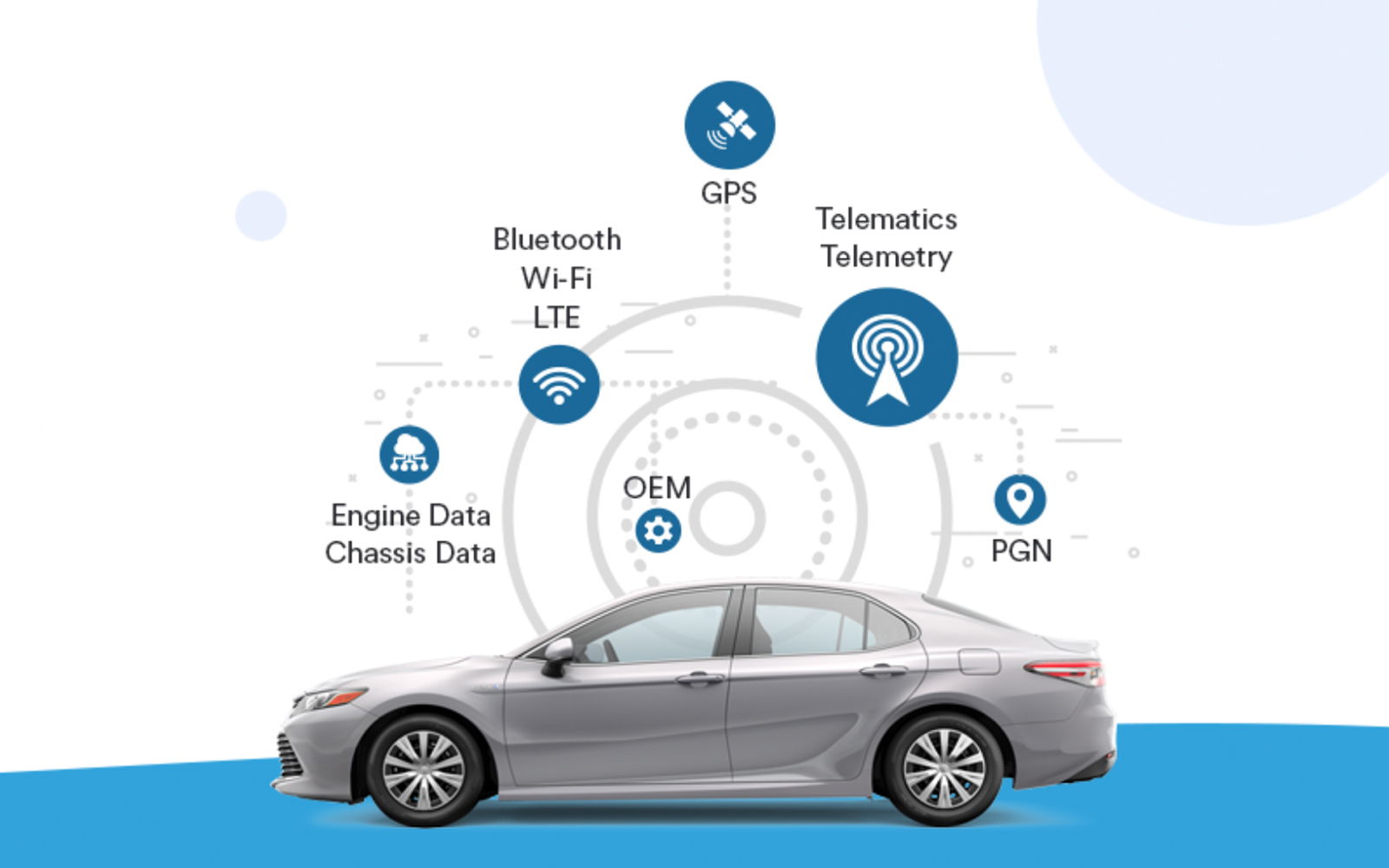You already know what a connected vehicle platform is. However, to understand how it works and what they use to make it, you need to understand the essentials of a connected vehicle platform. In general, there are four important parts of a connected vehicle platform – IoT modules, cloud infrastructure, software applications, and security. Let’s talk about these before we move to another topic.
IoT Module
IoT, or the internet of things module that is part of the connected vehicle platform. To best define it, it’s the physical objects (things) that we better know as hardware (with software), technology, and sensors in the connected vehicle. They are responsible for exchanging data with other devices around them. Through these, the connected vehicle platform enables the vehicle with a range of capabilities which we will mention all below.
V2I
V2I (Vehicle to Infrastructure) is for the vehicle to environment communication that provides enhanced security in a connected vehicle and has many benefits behind it for the environment.
The V2I technology increases the driver’s safety by sending immediate warnings before any sharp turn, an upcoming red light, and even when you are over the speed limit. If you are driving in bad weather, V2I will also inform you of any upcoming icy roads, heavy wind, heavy rain, and even sketchy areas that might be dangerous to drive in.
Other than that, V2I always has great benefits for the environment. Before going to park your vehicle, the car park communication feature will allow you to find parking before you even arrive at your destination. This will save you lots of time if you are in a hurry, or in a traffic jam. Before encountering a stoplight, the connected vehicle platform will communicate with traffic lights to help you adapt to a perfect speed, saving you lots of time and fuel.

V2V
Vehicle-to-vehicle communication allows the connected vehicle to communicate with other nearby devices. Other vehicles can help alert nearby devices of difficult road conditions, sketchy hidden roads, and even when another nearby vehicle is broken down in the middle of a high-speed road that would be hard to see at night.
If communication is well established between a connected vehicle platform and its adjacent parallel, then all the vehicles in a column can accelerate and brake at the same time, not needing any human intervention.
V2C
Vehicle to Cloud communication serves mainly to inform you about real-time traffic conditions. The biggest issue we have in the modern days is traffic jams, especially if you live in big cities; You might be waiting for hours in one spot to get home. V2C allows you to take alternative routes that have less traffic or none. This not only saves you time but will save you lots of fuel as well. We all definitely know what it feels to be stuck in the same spot for hours.
V2P
Vehicle-to-Pedestrian communication is very important when it comes to pedestrian safety. Over 20 thousand pedestrians are killed every year because of speedy cars or even crossing the road where and when they shouldn’t. More than 100 thousand are injured and usually result in long-term disabilities.
V2P is very concerned about this, that is why every connected vehicle has it. It will give warnings to pedestrians if it is safe to cross the road and even alert the driver if there are any pedestrians crossing the road. The pedestrian is warned by a wave or a light signal, while the driver will be warned by the connected vehicle platform.
V2X
Or Vehicle-to-everything, allows all connected vehicles to integrate with smart cities (which we will describe further). Its aim is to make sure in every city, there is enough data to provide to city planners that allow self-driving vehicles to communicate with each other. In other words, V2X is the summary of all the other connectivity categories.
Some IoT Examples
-
- Stop Light Countdown – The countdown you see at a red light before driving is one example of IoT. It can be helpful in informing you when to get ready to drive off. It is becoming very common in every main stoplight.
- Automatic Braking – Usually used when the connected vehicle platform scans that something is fairly close by, or even when there is a nearby red light. It will decelerate the car if its speed is too high.
- Start/Stop Function – Mostly found in newer cars, a button inside your connected vehicle that allows you to turn the car on without inserting any key.
- Semi-autonomous control – A lot of high-end cars like Mercedes S Class, BMW 7 series, etc, will have some features in the car that will allow it to drive by itself partially without human intervention.

Cloud Infrastructure
The connected vehicle platform cloud powers a network of millions of vehicles all over the world.
Automotive connectivity platforms hide all the complex data in the cloud, all to not complicate users using them. A connected vehicle platform with cloud infrastructure allows OEMs to scale and provide connected services from multiple software vendors.
The range of capabilities of a connected vehicle platform is endless. Let’s name a few of them to better understand the connection between each other.
-
Telematics
Gathers and analyzes vehicle data. The connected vehicle platform working on cloud infrastructure helps OEMs to deliver the following user experience: remote control (heating, start/stop, locking/unlocking, etc.), self-parking, semi self-driving cars, eCalls, etc.
-
Fleet Management
Offers a range of assistance when it comes to informing you on what is wrong with your car when you need to service your car, traffic analysis, fuel consumption, and so much more.
-
Universal Connectivity
Allows OEMs to manage all vehicles around the world. The connected vehicle platform connected to a cloud has two connectivity components: Global service operations center & connectivity management orchestration.
-
ADAS
By using the driving assistance capabilities, connectivity is enhancing self-driving transportation. Connected vehicles have many on-board sensors and cameras, where the connectivity platforms combine sensor data with other nearby vehicles from cloud-based service providers. Big data systems in the connected vehicle platform allow all of these capabilities to work effectively through V2X (data exchange, security, real-time locations, etc).

Software Applications
Connectivity in cars allows us to push the limits of our connected vehicle platform. Most applications in a connected vehicle platform are mandatory after 2018. Software applications have allowed innovators to realize human needs through these applications just by analyzing their behaviors.
Let’s have a look at a few software application examples used in the connected vehicle platform.
Business Outcomes & Customer Insights
Connected vehicle platform applications more than ever have created a sense of connection between the user and the vehicle. The whole reason behind this is to create increased ownership of the driver in his vehicle. The greatest benefit is the automotive companion apps which provide personalized data on customer’s everyday behavior. This allows car manufacturers to realize the demands of the customer and communicate with them by launching new features, providing news, and creating a personalized experience for them based on all their preferences.
Application Affinity
Applications in the connected vehicle platform allow the apps to communicate brand identity, rebranding, company missions & values. OEMs can use the connected vehicle platform applications to build brand affinity before a customer enters their door. What do we mean by this? It means that it allows brands to know what the customer is looking for and what to offer them before they enter the dealership!
Architecture Constraints
The biggest challenge engineers will face in the connected vehicle platform is connectivity. That is where they work the hardest before putting any vehicles on the road. Connectivity between the vehicle and the outside world can sometimes cause connective drops from both sides. This has to be handled by the UX in order to provide the most real-time experience possible. Another challenge is also the handling of emergency situations where the user needs to receive information before anything happens, or else connectivity issues can cause lives.
Leveraging Third-Party Services
The leveraging of Third Party services can be fairly helpful when it narrows down to saving your time. These are mostly services in the connected vehicle platform that cover core components such as maps, navigations, parking costs, pay tolls, etc. Sometimes, you can even make a reservation before you go to your favorite restaurant. Before you arrive anywhere, whatever you have to reserve, pay for, or where to navigate will be visible to you by the software application.

4. Security
What most people worry about when driving their vehicles is their data security. Nobody wants their sensitive information to leak on any external device. The connected vehicle platform doesn’t allow this but before we get to the point, what exactly do we need to do so our data is secure? Here are some typical guidelines that engineers address before they create data security:
- Access to the application
- Data security during transfer
- Security against hacking
- Brute-force attack protection
- Storing security of sensitive data
With that in mind, the connected vehicle has great protection against any external threats through its passive system. One of them being the passive SIM card, which won’t show your data to any external connections that try to find it. It will hide your location and every word you are saying on a call. The only time your data will be shown on a call is when you make an emergency call, but won’t be too sensitive since you might be in danger during these moments and you are seeking help.
CCPA & GDPR Acts
Other than the protection in your vehicle, your data is under law protection. The European Union’s General Data Regulation (GDPR) and the California Consumer Privacy Act (CCPA) guarantee to protect your personal data. Under these laws, all connected vehicle information exposure is under certain limits.
Automakers from the beginning have top set high-security standards for data sharing. From this it allows data to flow at a very high-security level in the connected vehicle platform. One example we can use is the eCall feature, which has limited power in it so it can’t spy on other data.
Before automakers incorporate a connected vehicle platform, they are brainstorming more about many potential threats that can happen to the data, such as “threat modeling”. Everyone knows how easily people hack and steal data nowadays. Thus, automakers and data engineers are coming together to try and prevent every possible way of this happening.

Market Shares
Many companies own high shares in the connected vehicle platform industry. All of those stay up to date on the latest technologies of the connected vehicle industry.
Most of the connected vehicle platform shares are currently in Microsoft’s hands, counting around 50% of the shares. Automotive manufacturers rely upon many connected vehicle platforms and use most of their IoT. They equip hundreds of millions of connected vehicles through their security, IoT, computing technology, & combined AI & IoT services.
Blackberry QNX is also going head to head with Microsoft, which has equipped 50% of all connected vehicles. They have already passed the 100 million mark of equipping connected vehicles. Microsoft knows there is high competition among many companies.
Ericsson also holds a 10% share with its partners- LG Electronics & Cerence, across over 180 countries. They have a partnership with Microsoft, and here is what Asa Tomsons had to say
“The Ericsson and Microsoft partnership will deliver a comprehensive connected vehicle platform at scale to the market. Our integrated solutions will help automotive manufacturers accelerate their global connected vehicle solutions and offer a better experience for drivers and passengers,” says Åsa Tamsons, Senior Vice President and Head of Business Area Technologies & New Businesses.
Conclusion
Safety and privacy are something we all worry about when driving. The biggest issues many have faced and still face are issues with their data privacy and safety in a vehicle. The connected vehicle platform wants to make our vehicles save us when we are not expecting a fatality. It also wants our data to be safe from any external threat. Our powers are limited to saving someone when in a vehicle, but the connected vehicle platform will be there when no one can!






